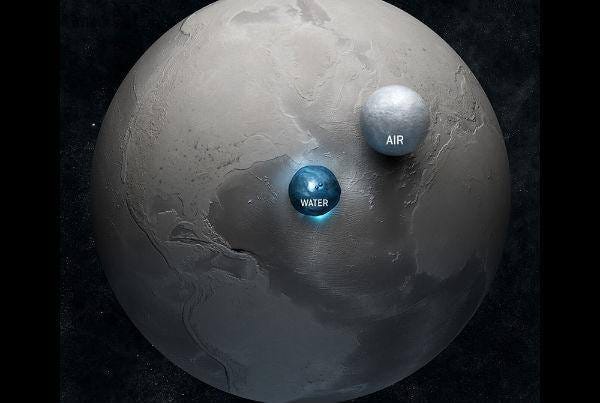Our Earth, Water and Air
Created by CEO Félix Pharand-Deschênes of the nonprofit science communication organization Globaia, this graphic shows the 875,325,599 cubic miles of water in the world—which includes all the ground water and all the water in clouds, water lakes, ice lakes, and rivers. There are 13,007.2734689 trillion pounds of air in our atmosphere. The air has been gathered up into a perfect sphere at sea-level density.
Now this seems like a lot of air and water, but these amounts are fatally small. The gray Earth in the background is to scale—and it weighs 13,170,000,000,000,000,000,000,000 pounds. So, although the quantities of air and water seem gargantuan, given the mass of the earth, they classify as mere whiffs of air and drops of water in a bucket.
The pollution of the air, now weighed down with both carbon and methane, is potentially an existential problem. The IPCC report released this month states:
Without increased and urgent mitigation ambition in the coming years, leading to a sharp decline in greenhouse gas emissions by 2030, global warming will surpass 1.5°C in the following decades, leading to irreversible loss of the most fragile ecosystems, and crisis after crisis for the most vulnerable people and societies.
And according to The World Counts, a severe water shortage will affect the entire planet by 2040 “if we keep doing what we're doing today."


